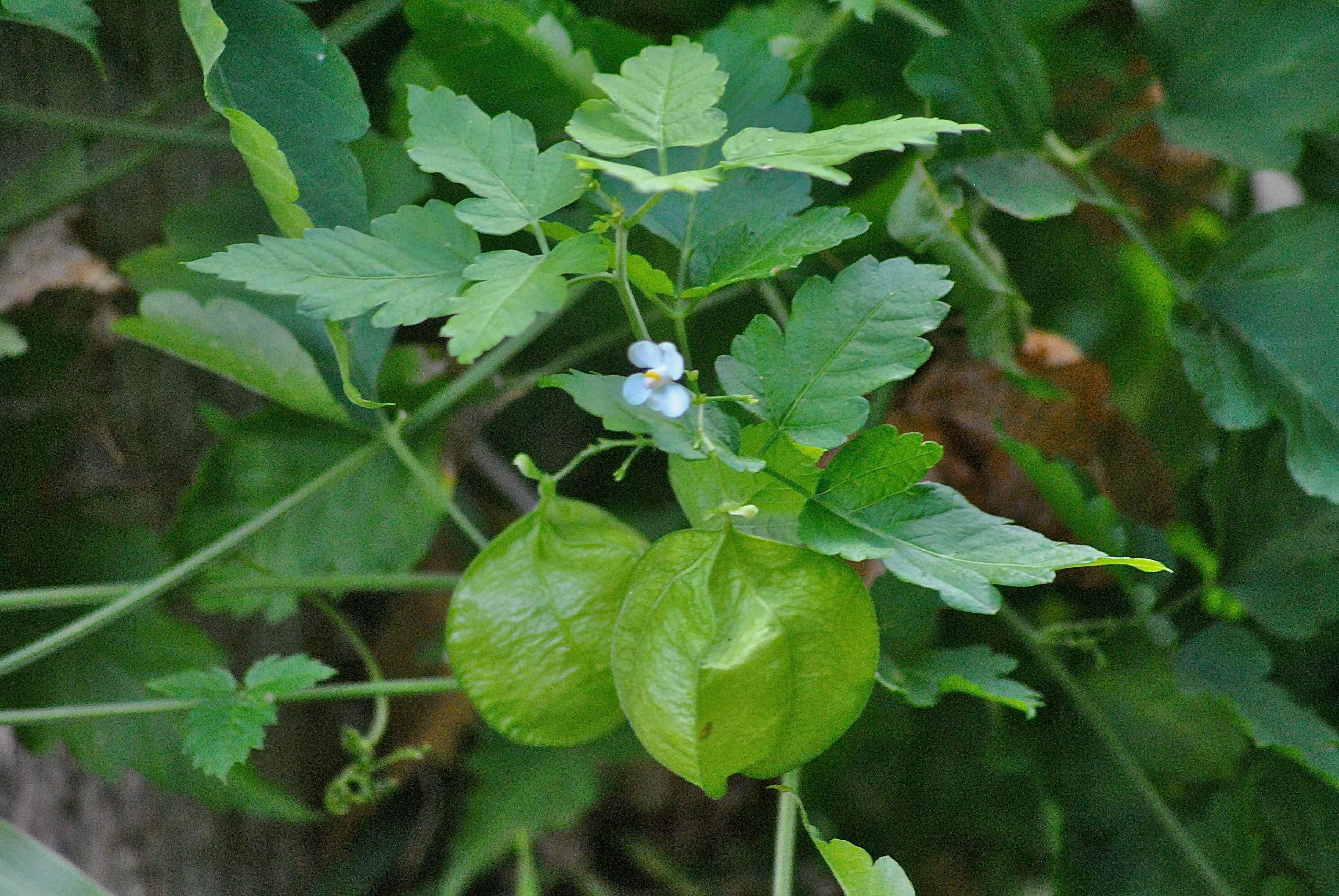
Balloon vine, photographed at Key West Tropical Forest and Botanical Gardens, Key West, Monroe County, in December 2013.
We have to admit, the first time we saw balloon vine way back in 2013, we thought with its sack-like fruit, we were looking at a groundcherry of some sort. We looked at it and looked at it but we could never figure out what species, never considering it might be something else.
Years later we looked again at our photos and noticed that nothing about the plant really resembled any species of groundcherry other than the fruit sacks. The flowers were clearly wrong, the leaves were wrong and what we were looking at was a vine, while ground cherries are upright plants.
Balloon vine, Cardiospermum corindum. Mystery solved, life lesson learned.
In any case, balloon vine is a perennial plant found in warmer places around the globe, including parts of Africa, Asia, the Pacific islands, South America, Central America, the Caribbean and the United States. In Florida, it’s only found in Miami-Dade and Monroe counties. It’s also found in Texas and Arizona.
It’s debatable whether it’s a Florida native. The Institute for Regional Conservation in Delray Beach and the Atlas of Florida Plants at the University of South Florida both consider it native, as does the Florida Native Plant Society; the U.S. Department of Agriculture’s PLANTS database classifies it as non-native, as does the Royal Botanic Garden Kew. For what it’s worth, we’ll go with the local experts and consider it native. The definition of a native is any plant or animal here at the time that the first Europeans arrived on our shores.
It is a vine, as the name suggests, fast-growing, capable of reaching 10 feet in length, or more. It will climb, grabbing onto neighboring plants via tendrils. The leaves are compound, with three leaflets per and arranged alternately along the stem. Each leaflet is deeply lobed and comes to a sharp point at its apex.
Favorite habitats include the edges of coastal hammocks, where it can get full sun.
Balloon vine is grown as an ornamental plant. The IRC recommends it for restorations and butterfly gardens — it is a host plant for the extremely rare Miami blue, the gray hairstreak and the silver-banded hairstreak butterflies — but warns that it can get out of hand.
In Myanmar (formerly Burma), the shoots are eaten; in places, the seeds are processed for a food-grade oil; in India, balloon vine is used in traditional medicine to treat arthritis, nervous diseases, stiff limbs and snakebites. In other places, it’s used medicinally to treat liver disease and arthritis, to improve memory, as a diuretic and to stimulate menstrual flow.
There is at least some research indicating that the chemicals balloon vine possesses have some anticancer, anti-inflammatory, antioxidant, antibiotic, liver protective and spasm-relieving properties.
Other common names include heart seed (which happens to be cardiospermum translated into English) faux persil and love in a puff. Balloon vine is a member of Sapindaceae, the soapberry family.
Key West Tropical Forest and Botantical Garden



